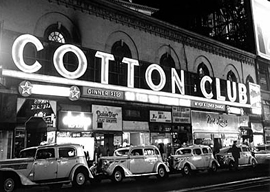
November 17, 2010

NEW YORK—Tony Judt was a very clever and learned Brit who taught in the Big Bagel and died last August from that dreaded Lou Gehrig’s disease. He was extremely brave until the end, writing and lecturing from his wheelchair—so convincingly that some nice guys banned him from speaking just before the end because of his opposition to Israeli policies. (They called him an anti-Semite although Judt was Jewish, which is par for the course.)
Judt wrote an essay about “My Endless New York” which was a gem. At times I think only foreigners can catch the city’s pulse—New York, of course, not being America. The city has never been homogeneous. The finest thing about the place, we are told, is the variety of its sideshows. Sixty-five years or so ago, A. J. Liebling spoke for the city, writing about boxing and the man who laid out the gloves and headgear for the pugs at Stillman’s Gym, or Hymie the Jew who operated sleazy clubs on 52nd Street, or Miss Ira, “the Harlem modiste” who sold turbans to ladies who liked to impress the men late at night. Liebling wrote of New Yorkers so submerged in one environment, such as the Garment Center or Jack and Charlie’s, that they lived and died oblivious of the other worlds around them. I agree. I caught some of that separate world as a teenager, the Park Avenue swells who never ventured anywhere except for their clubs and weekends in Long Island, even when slumming; the Italians and Irish who lived side by side in the Lower East Side and Hell’s Kitchen and who did manual work and went to baseball games on Saturdays and to church on Sundays; the rich “Negroes” up in Harlem who never ventured south but lived in some splendid houses with beautiful women and were said to be gangsters; the Jews on 47th Street, the Diamond District, who were suspicious of the rest of us and probably had good reason to be.
Back then the New York accent was worn as a badge of honor by those who spoke Noo Yawkese and treated as if it were leprosy by the Park Avenue lock-jawed WASPs. Basically, New Yorkese was a bastardized version of early 19th century Cork’s common speech, transplanted here during the mass immigration of the south Irish 150 years ago. What I loved about the accent when I was young was Noo Yawkers’ inability to pronounce the letters ‘th,’ using the letter ‘d’ instead. Dis, dem, dose, dey, and dat was da real Noo Yawk.
White swells and some not-so-swell went to Harlem in droves back then. For several years they packed the expensive Cotton Club on Lenox Avenue. It was a Jim Crow club, reserved for monied whites and Negro gangsters. The management was not cordial to Negro patronage “unless you were a celebrity like Bojangles,” as the great black essayist Langston Hughes put it. I remember going up there to Harlem, looking for black mamas who had some pretty hot girls under their thumb. I never got into trouble, but I never looked for trouble, either.